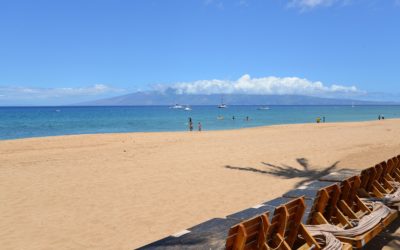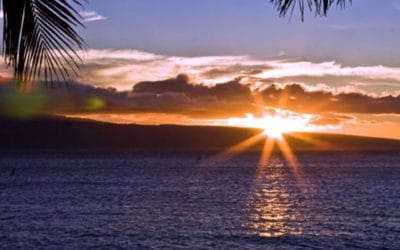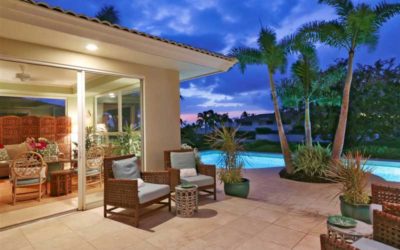It’s natural to want to cultivate a beautiful landscape to surround your Maui home. The balmy sub-tropical temperatures here in Hawaii just beckon for an indoor/outdoor lifestyle. You may have opted for a home with a spacious lanai, a tranquil swimming pool, a soothing hot tub spa, a shiny grill, and any number of other outdoor delights, but the scenery just isn’t complete without lush greenery spangled by vibrant flowers. If you enjoy gardening, you’re probably looking forward to the natural embellishments that you can add to develop the character and beauty of your home. But what to plant?
Some plants are attractive, but high-maintenance and expensive, while others may be easy to care for, but are not native to Hawaii or aren’t very attractive. These are just a couple of situations you might run into if you buy before you research. Let’s not forget that thirsty plants will also run up your water bill. Native Hawaiian plants provide the ideal solution to many of these problems. Why? First, because they thrive in Maui’s weather and soil conditions, and second, because most of Hawaii’s native species are uncommonly nice to look at! With the right species, you can create a stunning landscape, save money on water, and even help restore a more authentic natural environment.
So if you’re on board to plant native species, the next steps are to find out which ones thrive best in your area, and where to get them. As you’ve probably noticed by now if you’ve purchased real estate on Maui, the island has many faces in terms of its environment. There are lush jungles, rolling green hills, misty forests, sprawling savannahs, and everything in between. It’s like several islands in one. Because of this variability, certain native species thrive best in certain areas.
The highest concentration of luxury Maui real estate is situated in the West Maui or South Maui areas, where the weather tends to be warm, dry, and calm (all of which contribute to especially picturesque beaches.) If your property is located in one of these areas, you’ll want to opt for drought tolerant (xeriphitic) plants. There are a number of species that fit the bill. In fact, the ones on the following list can be grown in coastal, inland and upland gardens. Their versatility is their strength, and they are:
- Myoporum sandwicense – Also known as Naio and false sandalwood, this is a shrub or small tree that grows up to 15′ tall, with long glossy emerald leaves and charming little white/pink blossoms. It makes for an ideal hedge.
- Dodonaea viscosa – Also known as ‘A‘ali‘i, this is a shrub that can grow up to 10′ tall, featuring glossy green leaves with hints of red. It’s flowers are small and unusual in that they’re shaped like a curled up octopus. Their colors come in green, yellow and red. Although the flower size is unsubstantial, they are replaced with beautiful seed capsules that can be red, pink, green, yellow, or tan, and are often used in haku lei and flower arrangements.
- Vitex rotundifolia – Also known as Pöhinahina, kolokolo kahakai, and beach vitex, this charmer is a groundcover or sprawling shrub that features silvery oval leaves and lovely lavender flower clusters. It grows from 6″ to 2′ tall and spreads rapidly once established. This one is also wind and salt tolerant, and even grows well in sandy soils, so if you’re near the beach, you won’t want to overlook this charming addition to your landscape!
- Sida fallax – Also known as ‘Ilima papa, this is another groundcover, but grows from 6″ to just 1′ tall. It features deep green serrated leaves and bright yellow flowers that look like its relative, the hibiscus. These do very well in hot, sunny locations.
- Scaevola sericea – Also known as Naupaka kahakai or beach naupaka, this is a shrub that features large, paddle-shaped leaves that are light green in color. You can find their pleasantly fragrant, white flowers nestled in among the leaves. This one also grows well near beaches, thanks to its salt, wind and drought tolerance. Ideally used in hedges. (Fun fact: savvy snorkelers break a leaf and smear the sap on the inside of their masks to prevent them from fogging up.)
- Sapindus saponaria – Also known as Mänele and Hawaiian soapberry, this is a tree that features long, elegant, glossy leaves. It grows well in a variety of conditions, including hot and dry weather. Its fruity seed covering was historically used as a soap, while the seeds themselves were used in lei making.
For more ideas on native Hawaiian species, we recommend having a look at this handy guide “Native Hawaiian Plants for Landscaping, Conservation, and Reforestation” from the College of Tropical Agriculture and Human Resources at the University of Hawaii at Manoa. Another great resource is the Maui Nui Botanical Gardens, which hosts an Arbor Day 1,000 Hawaiian Tree Giveaway every year. As luck would have it, Arbor Day will be celebrated on November 4th this year, so you don’t have long to wait! The rules are one free tree per person, so if you bring your family and friends, you could take home quite a few trees, assuming you arrive early enough. Their staff will also answer questions about which trees will grow best in your area.
It’s always a good idea to get expert advice before making any investment of time and/or money, and when it comes to native Hawaiian plants, MNBG is a great place to start. As for Maui real estate, that’s our area of expertise. If you need our assistance, you’ll find our contact information at the bottom of the page. Mahalo!



